Are you a steel mill owner in Brazil struggling with the constant pressure of aging equipment and volatile costs? You know that every minute of downtime on your packing line is lost revenue. Every inefficient process inflates your energy bills, chipping away at your hard-earned margins. It often feels like you are fighting daily operational fires instead of focusing on long-term growth and strategy. What if you could transform your coil packing and handling from a necessary cost center into a strategic asset that boosts efficiency, cuts costs, and prepares your facility for the future?
An end-to-end coil packing solution streamlines the steel industry in Brazil by integrating automated handling, wrapping, and data collection into one unified system. This approach significantly reduces the need for manual labor, which lowers the risk of accidents and product damage. It also increases throughput and provides real-time data that is essential for smart manufacturing. By addressing the core challenges of maintenance, energy use, and digitalization, a total solution directly helps steel mills improve their bottom line and competitive edge.
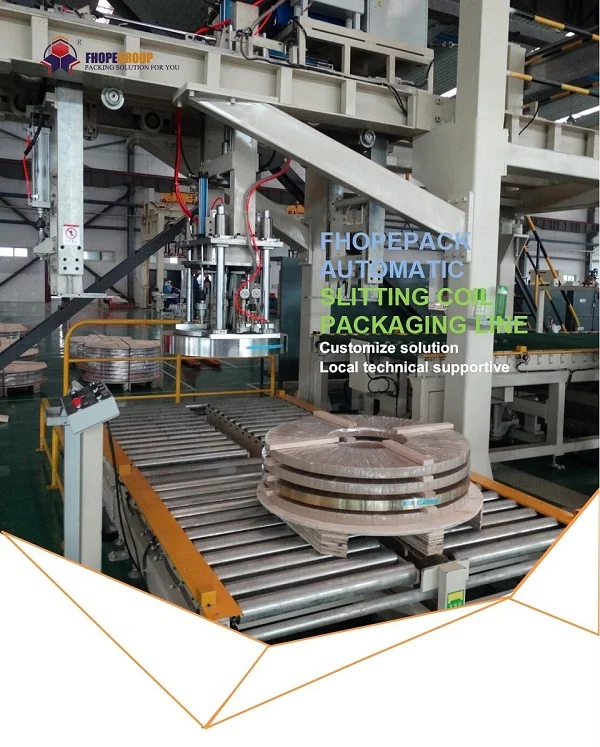
I have walked in your shoes. Before I founded SHJLPACK, I was an engineer on the factory floor. I later built my own successful packing machine factory. I understand the immense pressure to keep production lines running smoothly and profitably. It’s not just about buying a new machine. It's about finding a solution that solves multiple problems at once. This is why I am so passionate about sharing what I’ve learned. A well-designed packing system isn’t an expense; it’s an investment in stability and growth. Let's break down how this approach can specifically address the biggest challenges facing steel leaders like you.
How Can a Modern Packing Line Tackle Rising Maintenance Costs and Unplanned Downtime?
You have a critical order that needs to ship, but then you get the call: the old packing line is down again. A mechanical failure has brought the entire end of your production line to a halt. Now, your team is scrambling to do emergency repairs, your shipping schedule is delayed, and you are facing the high costs of overtime labor and express-shipped spare parts. This reactive cycle is stressful and expensive. Imagine instead a system that alerts you to a potential issue weeks in advance, allowing you to schedule maintenance during a planned shutdown. A modern, integrated packing line replaces this chaos with proactive control.
A modern packing line directly tackles high maintenance costs and downtime with a smarter, more robust design that features fewer wear parts, integrated self-diagnostics, and IoT sensors for predictive maintenance. This technology allows you to shift from a reactive repair model to a proactive one. By monitoring machine health in real-time, you can schedule service during planned shutdowns, which almost eliminates the massive costs and disruptions caused by unexpected equipment failures.
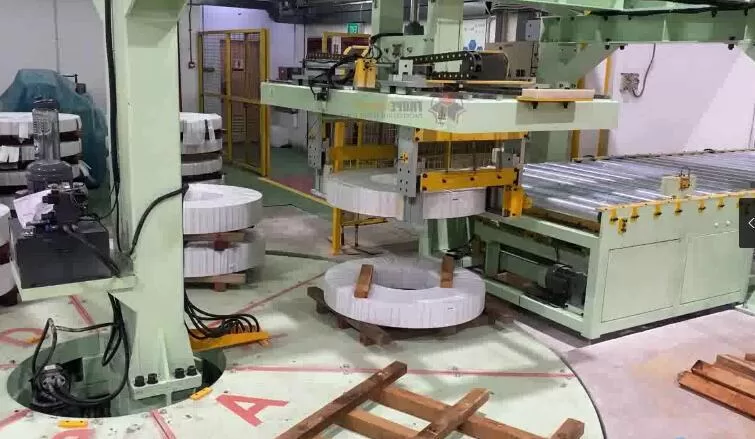
Dive Deeper: The Shift from Reactive to Proactive Operations
In my early days as an engineer, I saw firsthand how a single, unreliable machine could create bottlenecks that ripple through an entire factory. The "cost" of that machine wasn't its purchase price; it was the constant, hidden expenses of its failures. This experience taught me that true value lies in reliability and predictability.
The Real Cost of an Aging Machine
When we analyze an old packing line, we must look beyond the obvious repair bills. The true cost is much higher and includes several factors:
- Lost Production: Every hour the line is down is an hour you are not producing. This is a direct loss of revenue.
- Wasted Labor: Your skilled operators are idle or tied up assisting with repairs instead of running production.
- Supply Chain Disruptions: Delayed shipments can lead to penalties from clients and damage your reputation as a reliable supplier.
- Spare Part Inventory: Maintaining a large inventory of parts for an obsolete machine ties up capital that could be used elsewhere.
The Engineering Behind Modern Reliability
A modern packing solution is engineered differently to minimize points of failure. The goal is to maximize uptime through intelligent design.
- Servo Drives vs. Mechanical Systems: Older machines often rely on complex systems of gears, chains, and cams. These have many wear parts and are difficult to troubleshoot. Modern lines use precise servo motors, which have fewer mechanical components, are more reliable, and offer self-diagnostic capabilities.
- Durable Components: We use higher-grade materials and more robust construction in critical areas to extend the service life of the equipment.
- Modular Design: Components are designed as self-contained modules. If a part fails, the entire module can be swapped out quickly, reducing repair time from hours to minutes.
A Comparison: Old vs. New Maintenance Strategy
| Aspect | Old Reactive Approach | Modern Predictive Approach |
|---|---|---|
| Trigger | Equipment failure | Data threshold exceeded (e.g., high vibration) |
| Timing | Unpredictable, during production | Scheduled, during planned shutdown |
| Cost | High (overtime, express parts, lost output) | Low (standard parts, planned labor) |
| Focus | Fixing what is broken | Preventing failures from happening |
| Result | Constant fire-fighting, high stress | Stable operations, predictable output |
This shift to predictive maintenance, which is a core feature of a modern solution, directly supports the goal of increasing equipment uptime to 95% or more. It turns your maintenance team into a strategic asset, not an emergency response unit.
Can Integrated Packing Solutions Genuinely Lower Energy Consumption and Meet Environmental Standards?
As a steel mill owner, you are caught in a difficult position. On one side, you have volatile electricity and fuel prices that can dramatically increase your production costs overnight. On the other, you face growing pressure from government regulations and the market to operate more sustainably. Investing in major environmental upgrades like new furnace systems is incredibly expensive. It's easy to feel that cost-cutting and environmental responsibility are opposing goals. But what if one of your most essential production steps—coil packing—could help you achieve both simultaneously?
Yes, a modern integrated packing solution is specifically engineered to lower energy consumption and help you meet environmental standards. It achieves this by using high-efficiency motors with variable frequency drives (VFDs) that only draw the power needed for a specific task. The system also features intelligent power-down modes that put the machine to sleep during idle periods. Furthermore, optimized wrapping programs reduce the consumption of plastic film and other packing materials, which cuts both cost and waste, contributing to a smaller environmental footprint.
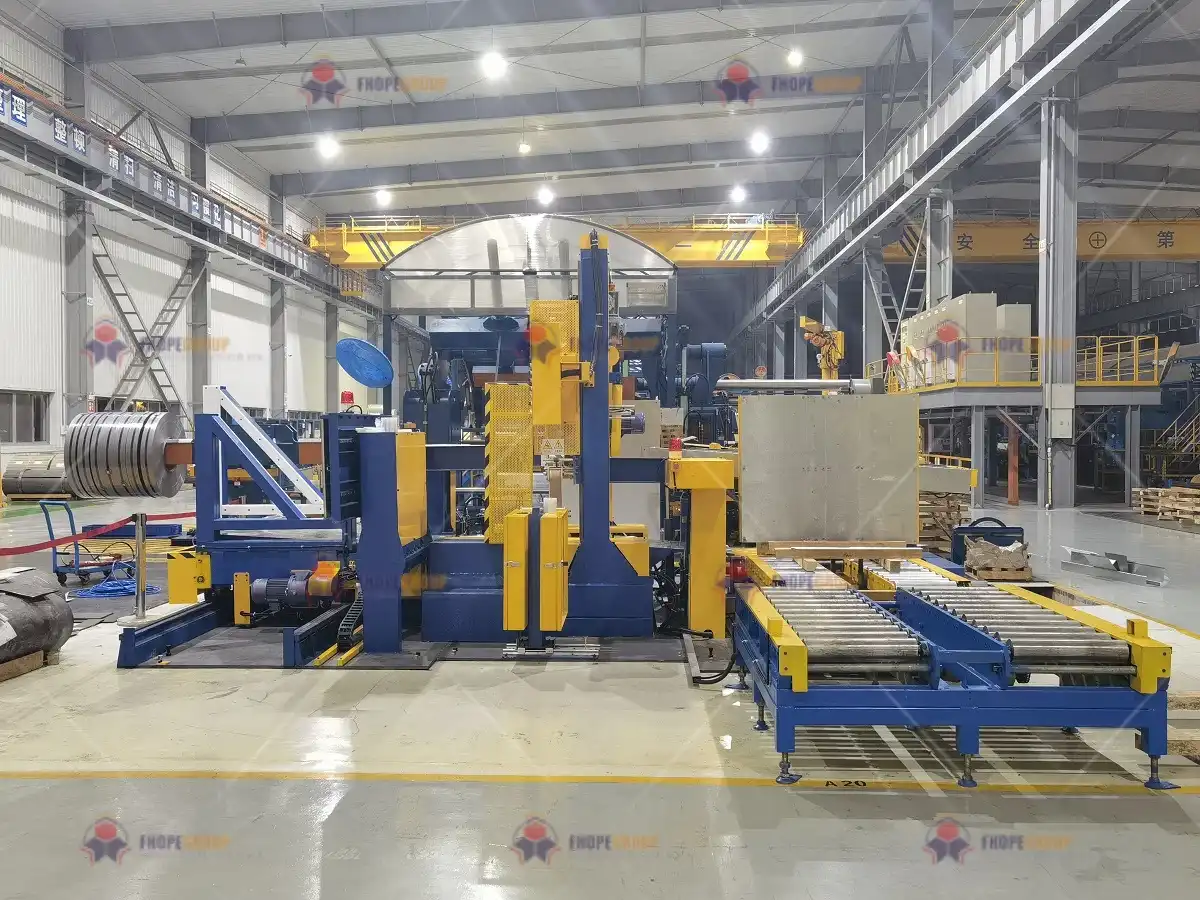
Dive Deeper: Engineering Efficiency into Every Movement
I respect leaders who have already implemented innovations like high-furnace heat recovery. It shows a deep understanding of how energy efficiency directly impacts the bottom line. The same principle applies to your packing line. An old machine is often a significant source of "energy leaks" that go unnoticed but add up over a year.
Identifying Hidden Energy Waste
Traditional packing machines were built for brute force, not efficiency. They often have several areas of significant energy waste:
- Oversized Motors: It was common practice to use motors that were far more powerful than necessary, meaning they run inefficiently and waste electricity.
- Constant Operation: Many older systems run continuously, even when there is no coil to be packed. The motors, heaters, and hydraulic pumps consume energy for no productive purpose.
- Inefficient Pneumatics: Leaks in pneumatic systems are common and can be a major drain on compressed air, which is a very expensive utility to produce.
- Material Waste: Poorly controlled wrapping processes can use 20-30% more stretch film than necessary, which is a waste of money and plastic.
How Modern Design Creates Savings
A "total solution" addresses each of these points through smarter engineering. It's about making the machine work intelligently, not just harder.
| Feature | How It Saves Energy & Resources | Connection to Goals |
|---|---|---|
| Variable Frequency Drives (VFDs) | Adjusts motor speed to the exact requirement of the task, reducing electricity use by up to 50% compared to a motor running at full speed. | Directly lowers unit energy consumption. |
| Intelligent "Sleep" Mode | Automatically powers down non-essential components during idle periods, waking up instantly when a new coil arrives. | Reduces energy waste during production gaps. |
| All-Electric Design | Replaces power-hungry hydraulic and pneumatic systems with efficient, precise electric servo motors. This eliminates air leaks and hydraulic fluid costs. | Lowers overall operating costs and maintenance. |
| Optimized Film Pre-stretch | A powered pre-stretch carriage can stretch film by up to 300%, meaning 1 meter of film becomes 4 meters. This drastically cuts film usage. | Reduces material waste, lowers cost, and improves environmental compliance. |
These features are not just small improvements; they work together to create a significant impact. Achieving a 10% reduction in unit product energy consumption is a realistic goal when you target these hidden inefficiencies. It proves that profitability and environmental responsibility can, and should, go hand in hand.
How Does a "Total Solution" Approach Support Digital Transformation and Improve Overall Profitability?
You have made forward-thinking investments in platforms for intelligent production scheduling. You understand that the future of the steel industry lies in data and connectivity. The problem is that traditional, standalone machinery creates "data islands." Your new packing line might be efficient, but if it cannot communicate with your Manufacturing Execution System (MES), it remains a black box. You have to rely on manual data entry, which is slow, prone to errors, and prevents you from getting a complete, real-time picture of your operations. You are striving for total production visibility, but these isolated machines make it a constant struggle.
A "total solution" is designed from the beginning to be a smart, communicative node in your factory's digital ecosystem, not just an isolated piece of equipment. It supports digital transformation by being a rich source of data. Equipped with integrated sensors and open communication protocols like OPC-UA, it seamlessly connects to your MES and ERP systems. It provides a constant stream of real-time information about cycle times, material usage, coil identity, and machine health. This flow of data eliminates manual entry, enables true production visualization, and empowers you to make data-driven decisions that directly improve profitability.
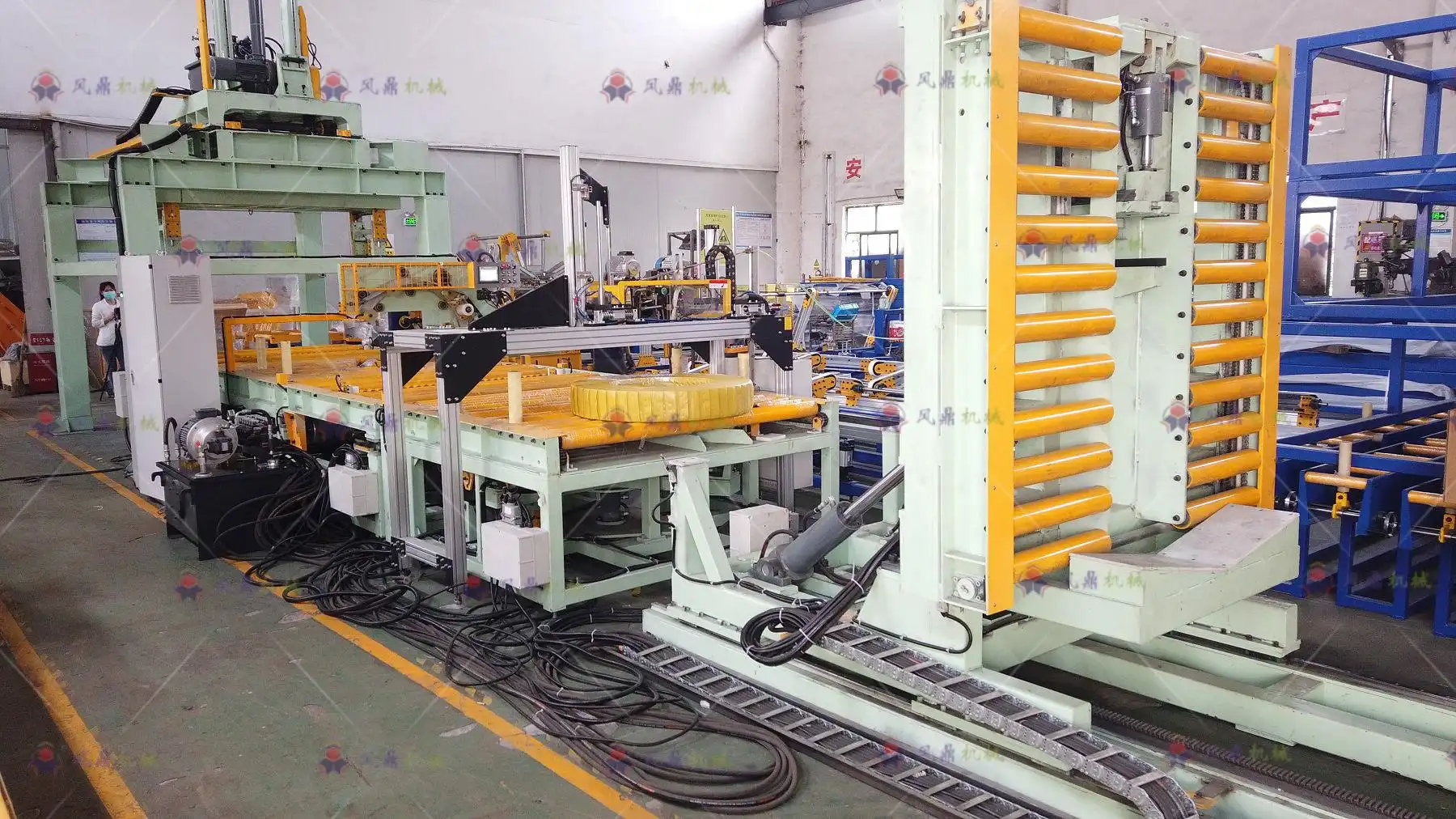
Dive Deeper: The Packing Line as a Central Data Hub
When I established my own factory, my goal was not just to build machines, but to solve operational problems. I quickly learned that one of the biggest problems for modern factory owners is the gap between the physical equipment on the floor and the digital systems in the office. A "total solution" is designed to bridge that exact gap.
From a Dumb Machine to a Smart Asset
Your packing line sees every coil that leaves your facility. This makes it a crucial control and data collection point. A modern line doesn't just wrap steel; it logs essential information for every single coil.
- Product Identification: It can scan a barcode or receive data from the MES to identify the specific coil (customer, grade, dimensions).
- Process Parameters: It records how much packing material was used, the wrapping time, and which wrapping program was selected.
- Operational Data: It tracks cycle times, uptime, downtime, and error codes, providing a clear picture of its own performance.
- Quality Control: It can be integrated with weighing scales and vision systems to confirm the coil's weight and check for surface defects before it is wrapped.
Seamless Integration with Your Factory Systems
This data is useless if it stays trapped in the machine. A key part of the "total solution" is ensuring easy communication. We use industry-standard protocols so the packing line can have a two-way conversation with your other systems.
- MES to Packing Line: Your MES sends an order to the packing line: "Coil #XYZ123 is coming. It requires Wrapping Program B and needs two circumferential straps."
- Packing Line to MES: The line performs the work and reports back: "Coil #XYZ123 has been successfully packed using 1.2 kg of film and 12 meters of strapping. Cycle time was 95 seconds. The final weight is 15.2 tons. It is now ready for dispatch."
Using Data to Drive Down Costs
This seamless data flow is the foundation for achieving your goal of an 8% reduction in operating costs. It allows for precise analysis and optimization.
| Data Point Collected | Actionable Insight | Impact on Profitability |
|---|---|---|
| Cycle Time per Coil | Identify bottlenecks in the packing process. Is the strapping taking too long? Is the conveyor speed optimized? | Increase throughput without additional capital investment. |
| Film/Strapping per Coil | Analyze material consumption by coil type or customer. Are you using the most cost-effective packing recipe? | Reduce consumable costs, a direct impact on cost of goods sold. |
| Downtime Error Codes | Pinpoint the most common reasons for stoppages. Is a specific sensor failing often? | Focus maintenance efforts to improve reliability and uptime. |
| Energy Consumption per Hour | Correlate energy use with production schedules. Can you shift energy-intensive tasks to off-peak hours? | Lower utility bills and reduce your carbon tax liability. |
This is the essence of digital transformation. It's not about having fancy dashboards; it's about using accurate, real-time data to make smarter, more profitable decisions every single day.
What Does a True Strategic Partnership in Coil Packing Equipment Really Look Like?
You've likely had this experience before. You invest a significant amount of capital in a new piece of equipment. The supplier's sales team is very attentive and makes many promises. But once the machine is installed and the final payment is made, they seem to disappear. When you have a problem, you are left dealing with a generic service hotline. When you need training for new staff, it is difficult to arrange. It feels like a simple transaction, leaving you to manage the long-term success of the investment all on your own.
A true strategic partnership is fundamentally different from a simple supplier transaction. It is a long-term relationship that begins long before the sale and continues for the entire lifecycle of the equipment. It involves a deep, collaborative effort to understand your unique operational challenges to design a truly customized solution. It includes comprehensive on-site installation, commissioning, and training for both your operators and maintenance teams. Most importantly, it means having a dedicated partner who provides ongoing support, proactive advice, and consultations on future upgrades to ensure your investment continues to deliver value as your business evolves.
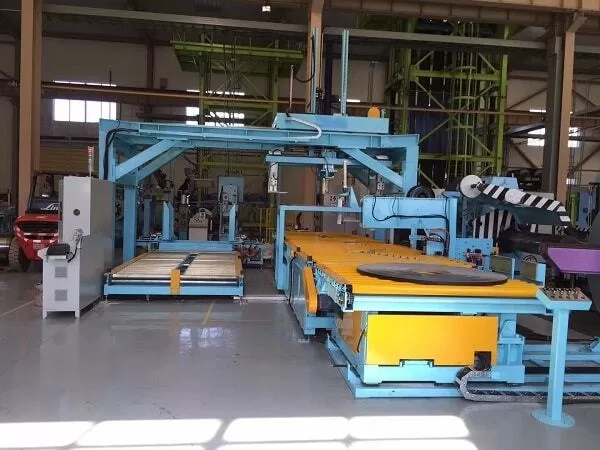
Dive Deeper: From Supplier to Partner Across the Entire Lifecycle
This topic is deeply personal to me. The reason I am so grateful to this industry is because of the relationships I built. My success came from helping my clients succeed. I learned that selling a machine is easy, but earning a client's trust for years requires a completely different mindset. It requires being a partner. A strategic partnership is not a slogan; it is a structured process built on shared success.
Phase 1: Collaborative Design & Consultation
This is where the partnership begins. A supplier sells you a standard machine from a catalog. A partner works with you to build the right machine for your specific needs.
- Needs Analysis: We don't start by showing you machines. We start by asking questions. What are your coil sizes? What is your desired throughput? What does your factory layout look like? What are your biggest pain points right now?
- Customization: Based on this analysis, we co-design the solution. Maybe you need a special conveyor system to fit a tight space. Perhaps you need integration with a specific brand of strapping head. A partner tailors the solution to fit your operation, not the other way around.
Phase 2: Flawless Implementation & Training
The best machine in the world is ineffective if your team doesn't know how to use it or maintain it properly.
- On-Site Commissioning: Our engineers are on-site to ensure the machine is installed and running perfectly. We don't leave until it meets the agreed-upon performance criteria.
- Comprehensive Training: We provide separate, dedicated training for operators (how to run it safely and efficiently) and for your maintenance team (how to troubleshoot, service, and perform preventative maintenance). This empowers your own people to be self-sufficient.
Phase 3: Long-Term Support & Optimization
The relationship only deepens after installation. Your business will change, and your equipment should be able to adapt.
- Ongoing Support: You have a direct line to engineers who know your specific machine, not a call center. We can often diagnose issues remotely to get you back up and running faster.
- Proactive Engagement: We will reach out with recommendations for software updates, new components that can improve efficiency, or advice on how to adapt the machine for a new product you are launching.
- Future-Proofing: We act as your consultant on industry trends. We can advise you on how to further your digital transformation or meet new environmental standards by upgrading your existing system.
Supplier vs. Partner: A Clear Distinction
| Stage | A Typical Supplier | A Strategic Partner (SHJLPACK) |
|---|---|---|
| Before Sale | Sends a standard quote. | Conducts on-site analysis, co-designs a custom solution. |
| During Sale | Focuses on closing the deal. | Focuses on defining a clear project plan and timeline. |
| Installation | Ships the machine, may offer remote support. | Provides on-site engineers for installation and commissioning. |
| After Sale | Directs you to a service hotline. | Provides dedicated training and a direct line for ongoing support. |
| Long Term | Sells you spare parts when you call. | Proactively consults on upgrades, optimization, and future needs. |
This is what we mean by "TOTAL SOLUTION." It's not just about the hardware. It's about providing the expertise, support, and long-term commitment that turns an equipment purchase into a genuine strategic advantage for your steel mill.
Conclusion
Choosing the right packing line is a strategic decision. We provide total solutions that turn your packing station into a profit-driving, future-ready asset for your steel mill.





